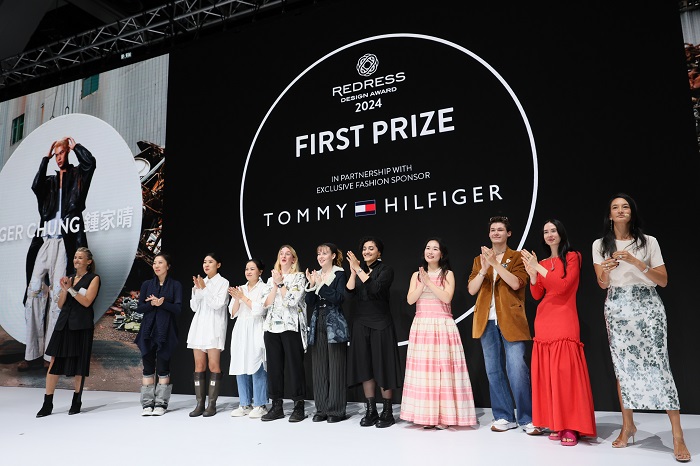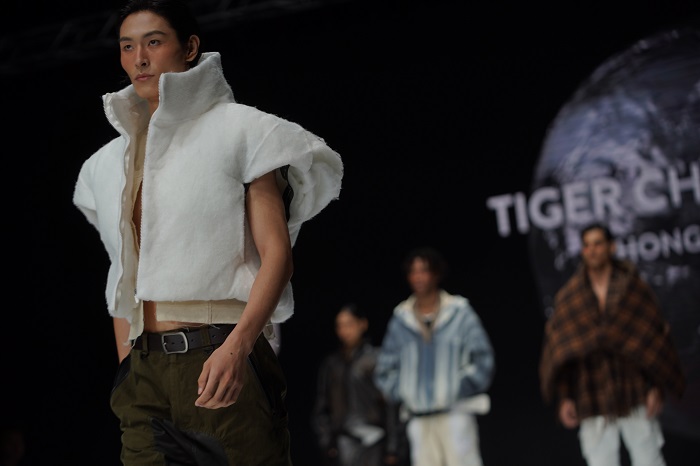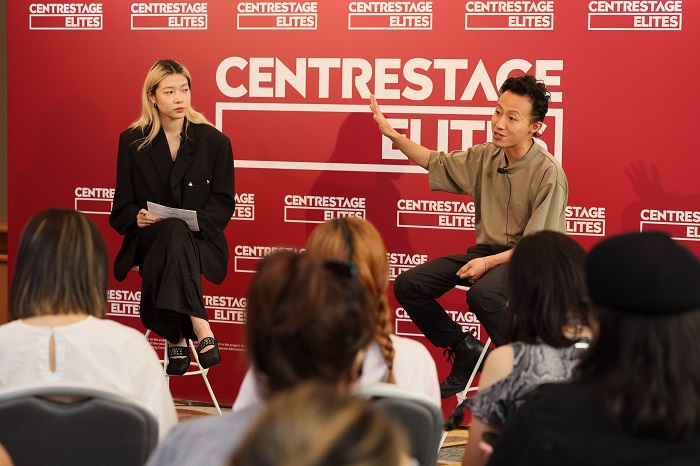FW
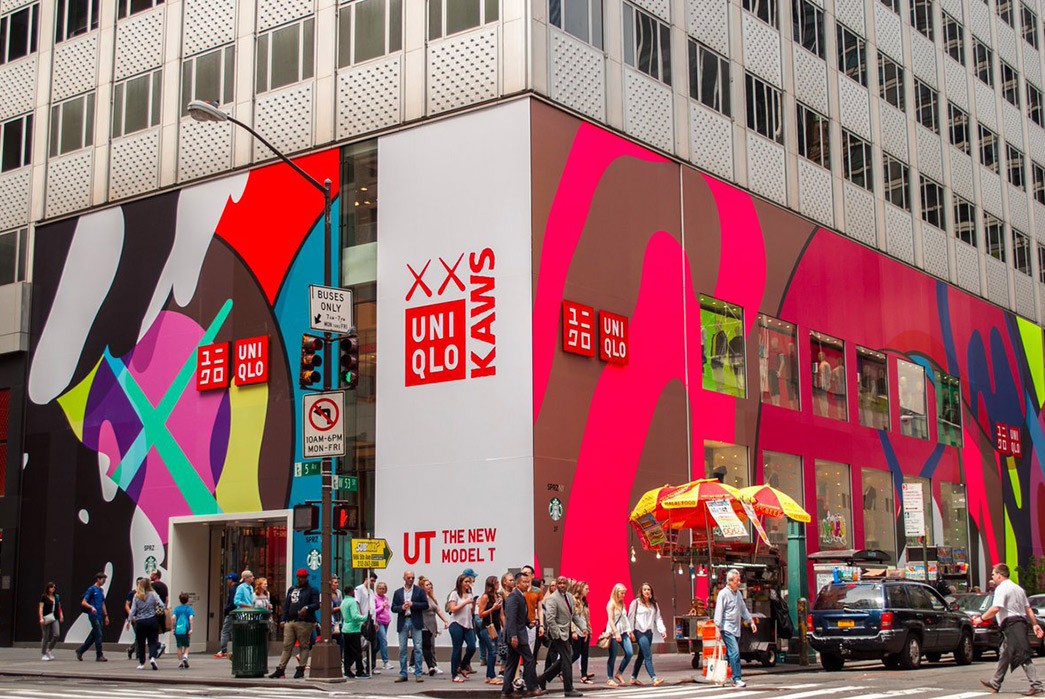
Uniqlo, a brand synonymous with quality basics and innovative fabrics, has taken the world by storm. Its journey from a small family-owned tailoring shop in Yamaguchi to a global retail giant with nearly 2,500 stores worldwide is nothing short of remarkable. Overlooking the picturesque Sumida River, Fast Retailing's headquarters in Tokyo's Ariake district stands as a testament to the company's incredible growth and its unwavering commitment to innovation.
Laying the foundation
Uniqlo was launched in 1972 when Tadashi Yanai, a 23-year-old with big dreams, took over his father's clothing chain, Ogori Shoji. Yanai had a vision to transform the business from selling men's suits to offering casual everyday wear. In 1984, he opened a new store in Hiroshima, named Unique Clothing Warehouse, which he later shortened to Uniqlo. "When I try something new, I know that I'm going to fail. I do not plan for success from the very first step. So I don't take these failures too seriously, I just take on the challenge," says Tadashi Yanai
The early years were not without their challenges. Uniqlo's first foray into the international market in 2001 with a store in London was a failure. The company had to close most of its stores in London by 2004 and faced similar challenges in Shanghai. These early failures underscored the importance of differentiation and understanding local market needs.
Global expansion with 'global is local, local is global' approach
The second wave of store openings in Europe, with flagship stores launching in London and Paris in 2007, marked a crucial turning point. Uniqlo adopted a ‘Global is local, local is global’ approach, tailoring its products and strategies to resonate with local consumers while maintaining a global brand identity.
Table: Store network across the world
|
Region |
Number of Uniqlo stores |
|
Japan |
808 |
|
Greater China |
942 |
|
Southeast Asia and Oceania |
478 |
|
South Asia |
13 |
|
North America |
61 |
|
Europe |
193 |
As of May 2024, Uniqlo boasts of a vast global network of 2,495 stores, with more stores outside Japan than within. For example, Uniqlo's success in China is a testament to its 'Global is local, local is global' approach. The brand has adapted its product offerings to suit Chinese consumers' preferences, offering larger sizes and styles that resonate with local tastes. Uniqlo has also leveraged e-commerce platforms like Tmall to reach a wider audience in China.
Similarly, Uniqlo entered India in 2019 and has been steadily expanding its presence. The brand currently operates 13 stores in India and has plans for further expansion. Uniqlo's focus on functional and high-quality products at affordable prices has resonated well with Indian consumers. As Yanai says, "We aim to become the number one apparel brand in India." Uniqlo India's financial performance too has been impressive, with a 31 per cent rise in turnover in FY24. The company reported operating revenue of Rs 814.85 crore and a net profit of Rs 85.31 crore in FY24.
Magic mantra: Customer-centric approach and innovation Uniqlo's customer-centric approach is at the heart of its success. The company places great emphasis on gathering and analyzing customer feedback to improve its products and innovate. Also, Uniqlo's success lies its LifeWear philosophy - creating high-quality, functional, and affordable clothing for everyone. This commitment to quality and customer satisfaction permeates every aspect of the business, from product development to supply chain management.
Uniqlo's collaboration with Toray Industries, a leading material manufacturer, has led to the development of innovative fabrics like Heattech, AIRism, and Ultra-Light Down. These technologies have revolutionized the way people dress, offering comfort and functionality in everyday clothing.
The fourth frontier
As Uniqlo celebrates its 40th anniversary, Yanai has outlined his vision for the future: "The Fourth Frontier: Challenge, Take Action, Achieve." This vision encompasses Uniqlo's commitment to tackling future challenges, embracing technological advancements, and evolving to meet the changing needs of consumers. Yanai has set ambitious targets for the company, aiming to achieve group revenue of ¥5 trillion within a few years and then doubling that to ¥10 trillion. India is expected to play a key role in achieving these goals. “We may or may not be successful in impressing customers always. But the mindset should always be to impress customers,” Yanai emphasizes.
As Uniqlo embarks on its next chapter, its focus on sustainability, technology, and customer satisfaction is poised to propel the brand to even greater heights in the years to come.
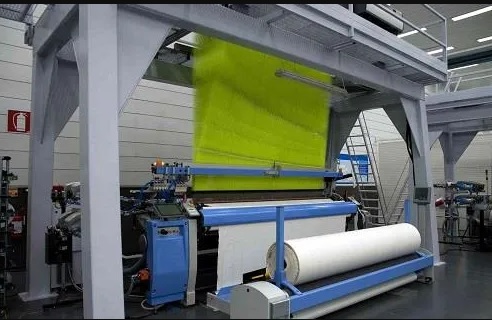
A landmark trade agreement between the European Union (EU) and Pacific states is poised to significantly alter the dynamics of the textile and apparel industry in both regions. The interim Economic Partnership Agreement (IEPA), which includes Fiji, Papua New Guinea, Samoa, and the Solomon Islands, sets the stage for increased trade flows and deeper economic integration.
Key provisions of the IEPA
The IEPA focuses on establishing a free trade area, with a particular emphasis on sustainable development and supporting the integration of Pacific States into the global economy.
Tariff elimination: The EU grants 100 per cent duty-free and quota-free access to all imports from Pacific EPA countries, ensuring permanent and unrestricted access for all products. Pacific EPA countries are progressively phasing out duties on EU imports, with flexibility based on their development levels and sensitive sectors. Safeguard measures, such as import quotas or temporary reintroduction of duties, can be implemented under specific circumstances to protect domestic industries from import surges.
Rules of origin: The IEPA includes rules of origin to ensure that only products originating from the participating countries benefit from the preferential tariff treatment.
Trade facilitation: The agreement aims to simplify customs procedures and reduce trade barriers, facilitating smoother trade flows.
Sustainable development: The IEPA includes provisions on labor rights, environmental protection, and good governance, promoting sustainable trade practices.
Impact on the textile and apparel industry
The IEPA is expected to significantly boost the textile and apparel industry in both the EU and the Pacific States.
Primarily, it will give a boost to exports from Pacific States to the EU. The removal of tariffs and quotas will make textile and apparel products from the Pacific States more competitive in the EU market. This is likely to lead to a substantial increase in exports, creating new jobs and boosting economic growth in the region. The agreement is also likely to boost exports of high-quality, niche products from the Pacific, such as traditional handicrafts and sustainable textiles.
Table: Textile & Apparel Exports from Pacific to EU
|
Year |
Exports from Pacific to EU (in million $) |
% Change |
|
2022 (Pre-IEPA) |
50 |
- |
|
2023 (Post-IEPA) |
65 |
+30% |
|
2024 (Projected) |
80 |
+23% |
It will also result in improved access to raw materials. Pacific States' textile manufacturers will benefit from duty-free access to raw materials and intermediate goods from the EU, reducing production costs and enhancing competitiveness. The IEPA's favorable trade environment is expected to attract more investment in the textile and apparel sector in the Pacific States, further stimulating growth and development.
Table: Textile & Apparel Exports from EU to Pacific
|
Year |
Textile & Apparel Exports from EU to Pacific (in million $) |
% Change |
|
2022 (Pre-IEPA) |
200 |
- |
|
2023 (Post-IEPA) |
220 |
+10% |
|
2024 (Projected) |
250 |
+13.6% |
Overall the IEPA is expected to significantly boost trade in textiles and apparel between the EU and Pacific states. The agreement will likely lead to structural changes in the textile and apparel industries in both regions, with a focus on higher-value-added products and sustainable production methods. The IEPA has the potential to contribute to sustainable development in the Pacific, creating jobs and boosting economic growth.
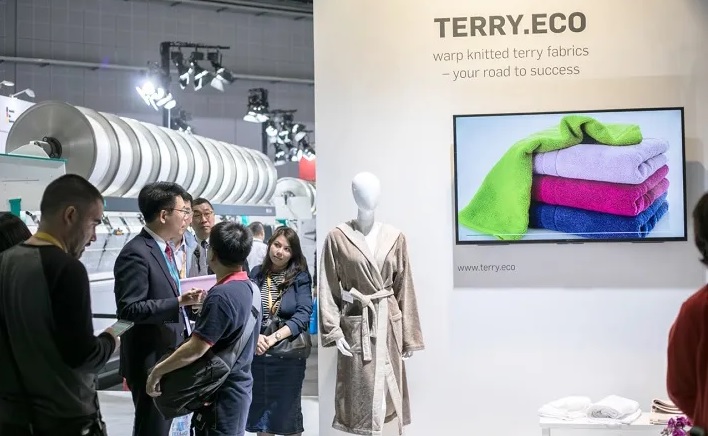
The Karl Mayer Group is gearing up for ITMA ASIA + CITME 2024, set to take place from October 14 to 18 at the Shanghai National Exhibition and Convention Center. As the textile industry faces rapid change and global disruptions, Karl Mayer is stepping forward with cutting-edge technologies under the theme "Master the Change." The event will focus on solutions tailored to the growing demands of sustainability, profitability, and efficiency in the Chinese and international textile sectors.
Navigating market challenges with technology
China’s textile industry has remained resilient amid global uncertainties, maintaining growth through exports. However, rising costs, labor shortages, and sustainability concerns are significant hurdles. Karl Mayer's innovations aim to help manufacturers adapt to market dynamics and capitalize on new growth opportunities. Their focus will include mechanical engineering, digitalization, and customer-centric solutions to address these pressing challenges.
Karl Mayer will highlight solutions for the warp knitting sector, including the HKS 2-S with gauge E 44, designed for producing lightweight, dense fabrics ideal for outdoor fashion and sun protection clothing. These textiles offer excellent UVA protection and breathability, making them perfect for sun protection garments.
Additionally, the display will feature warp-knitted alternatives to cotton, ideal for sportswear, including yoga apparel. These fabrics provide the look and feel of cotton but are more sustainable and productive due to Karl Mayer’s advanced technology. The warp-knitted E-40 fabric for use in thick down jackets will also be a highlight, offering comfort and sustainability in cold-weather clothing. Karl Mayer's exhibit will also showcase breathable and stylish warp knits for shoes, produced by the HKS 3-M ON Plus and double raschel machines. These warp knits are gaining popularity as mono-material solutions for upholstery in cars and mattresses. The innovative materials offer flexibility, breathability, and sustainable production processes, expanding their use in both fashion and technical textiles.
Digital solutions to enhance textile production efficiency
At the forefront of Karl Mayer's ITMA ASIA display will be their latest digital solutions aimed at streamlining textile production. Their myKM.ON customer portal will provide visitors access to Karl Mayer’s digital ecosystem, including the new Energy Efficiency Solution (EES), which focuses on reducing energy consumption for warp knitting companies. These digital tools are designed to improve sustainability while driving down operational costs.
The Digital Production Management (DPM) system and Quality Monitoring System (QMS) for warp knitting will also be introduced. These systems use real-time monitoring and AI to optimize production processes and improve quality control. Stoll PPS, powered by KM.ON, will enhance flat knitting efficiency, reducing production times and improving delivery reliability.
Flat knitting solutions for changing market demands
STOLL, Karl Mayer’s flat knitting division, will be showcasing the CMS 703 ki knit and wear, combining flexibility, efficiency, and a competitive price point. With its 72-inch working width, the machine is designed for producing finished garments and full-fashion products in a wide size range, catering to the growing demand in Asia.
Other flat knitting highlights include the CMS 503 ki L, offering pattern variety across larger sizes, and the ADF 530-32 ki FLEX, which can produce a diverse range of items from sweaters to upholstery fabrics, thanks to its innovative comb gap control.
Sustainability and efficiency in warp preparation
Karl Mayer will also unveil a new generation of direct warpers designed to improve efficiency in warp preparation. These machines offer superior performance, producing high-quality beams for weaving with greater energy efficiency and operational reliability. The new Cascade system reduces steam consumption during the sizing process, significantly cutting environmental impact.
For predictive maintenance, the Smart Size Box technology monitors wear components, while the combined Care X-Tend and Connectivity Package ensures high machine availability.
Karl Mayer will also host an in-house show at their China subsidiary in Changzhou, starting a day before the exhibition. The event will feature demonstrations of their latest machines, including new models in the double raschel sector. Additionally, the unveiling of their new showroom in China will present solutions from all their technology areas.
Technical textiles for new market opportunities
Karl Mayer's Technical Textiles division will spotlight its multiaxial warp knitting machines, capable of producing non-crimp fabrics for composites in lightweight construction. These fabrics, made from glass and carbon fibers, offer exciting opportunities for conventional textile manufacturers looking to expand into technical textiles.
At the in-house show, visitors can see Karl Mayer’s new weft insertion machines, which will be particularly valuable in the construction industry for producing lightweight glass fabrics used in plaster grids and crack tape.
Karl Mayer's participation at ITMA ASIA + CITME 2024 will provide the textile industry with innovative solutions to navigate market volatility, embrace sustainability, and enhance production efficiency.
As announced by Manjunath Bhandary, Member of the Legislative Council, the Karnataka state cabinet has approved the long-anticipated plan to develop an Rs 27-crore textile park in Karkala, Udipi district.
To be developed under a public-private partnership (PPP) model, this textile park is expected to become a hub of economic activity in the region. The project is poised to create a significant number of employment opportunities, benefiting the local community and promoting industrial growth in the district.
The project was initially announced by BS Yediyurappa, Former Chief Minister, Karnatakain the state budget plan of 2020-21. Despite the early momentum, the project faced delays and challenges in securing the necessary approvals and funding. However, renewed efforts were made by V Sunil Kumar, former Energy and Kannada Culture Minister, as he laid the foundation stone for the park in March 2023.
Once completed, the textile park is expected to house several units dedicated to textile manufacturing and processing, offering facilities for spinning, weaving, and garment production. It is set to attract both local and national investors, fostering innovation and sustainable practices in the textile industry.
Strategically located in the Udupi district, a place known for its skilled labor force and proximity to key transportation routes, the Karkala textile park will prove as an ideal location for industrial development in the state. It will not only enable smoother logistics in the state but also ensure efficient distribution of textile products both within India and for export markets.

In the ever-evolving landscape of fashion, price transcends its basic function of monetary exchange. It acts as a powerful tool, silently communicating a brand's positioning, quality perception, and target audience.
Price as a positioning tool
Price is a cornerstone of brand positioning. The price tag on a garment speaks volumes before a customer even tries it on. A study by Journal of Business Research found consumers often use price as a heuristic (mental shortcut) to evaluate product quality. No wonder, luxury brands, such as Chanel and Gucci, employ exorbitant price points to cultivate an aura of exclusivity and opulence. Their pricing strategy reinforces their status as coveted symbols of wealth and taste. “We price our products to reflect the quality of materials, the intricate handwork, and the heritage of the brand,” says a spokesperson for Valentino At the other end of the spectrum, value brands like H&M and Zara focus on affordable fashion, targeting a broader consumer base seeking stylish yet budget-friendly options.
Premium brands, like Michael Kors and Ralph Lauren, occupy the middle ground. They balance quality, design, and price to appeal to a discerning clientele. Their pricing strategy often involves offering slightly elevated prices to justify the perceived higher value proposition.
Price parity in the lifestyle sector
Historically, fashion and apparel prices have maintained certain parity with other lifestyle products. As consumer incomes rose, so did spending across various categories. However, recent trends suggest a shift in this dynamic. The rise of fast fashion has compressed price points in apparel, while other sectors like electronics and luxury goods continue to witness upward price trajectories.
This disparity has implications for consumer behavior. As fashion becomes more accessible, consumers may be willing to spend more on other lifestyle products, such as premium electronics or experiences. This shift in spending priorities challenges fashion brands to innovate and offer unique value propositions to retain market share.
Playing the price game, luxury vs. premium vs. value
Luxury brands maintain high prices with limited production runs and an emphasis on premium materials and craftsmanship. “It’s not just about the product; it’s about the experience,” says Milton Pedraza, CEO of The NPD Group, a market research firm in a Forbe interview. Think limited-edition bags or hand-stitched blazers – these items come with a hefty price tag that reflects their exclusivity and perceived higher value.
Positioned between luxury and value, premium brands offer a balance of quality and price. “We use high-quality materials and construction techniques, but we don't have the same overhead costs as luxury brands,” explains Sarah Brook, Founder of a premium clothing line. This allows them to offer well-made pieces at a more accessible price point.
The value segment focuses on affordability and trend-driven designs. Fast-fashion brands prioritize low production costs and high volume to keep prices low. “Our target customer is looking for the latest trends at a price they can afford,” says a spokesperson for Forever 21. While this keeps clothing accessible, it often raises concerns about quality and sustainability.
Is price parity across lifestyles?
The pricing strategy for fashion doesn't always mirror other lifestyle products. For instance, a high-end smartphone might cost more than a designer dress, reflecting the technological advancements within the phone. Similarly, a luxury car might justify its price due to the complex engineering involved. Fashion, however, often incorporates a significant "brand premium" into the price tag, which isn't necessarily tied to the cost of materials or production.
COVID's impact on fashion pricing
The COVID-19 pandemic was a seismic event that disrupted the fashion industry in unprecedented ways. Supply chain disruptions, economic uncertainty, and changing consumer behavior forced brands to re-evaluate their pricing strategies. Initially, many brands resorted to discounting to clear excess inventory and stimulate demand. However, as the global economy began to recover, there was a gradual shift towards price increases to offset rising production costs and inflationary pressures. Interestingly, the pandemic accelerated the growth of direct-to-consumer (DTC) models, allowing brands to have greater control over pricing. By eliminating intermediaries, DTC brands could offer products at competitive prices while maintaining profit margins.
Consumer behavior and price sensitivity
Consumer behavior towards price is complex and multifaceted. While some consumers are driven by price, others prioritize quality, brand reputation, and emotional connections. The rise of value-conscious consumers has led to increased price sensitivity, especially in economically challenging times. However, the willingness to pay a premium for unique or exclusive products remains strong. Luxury brands continue to thrive by catering to this segment of the market. Moreover, consumer behavior varies across different demographics. Younger consumers, for instance, are often more price-sensitive and open to exploring affordable fashion brands. In contrast, older consumers may be willing to pay a premium for comfort, quality, and established brands.
Regional variations
Pricing strategies vary significantly across different regions. Western markets, particularly the US and Europe, have historically been characterized by higher price points for fashion and apparel. This reflects factors such as higher labor costs, stronger currencies, and a more affluent consumer base. In contrast, Eastern markets, such as China and India, offer opportunities for lower production costs and a growing middle class. This has led to the emergence of strong domestic fashion brands that can compete on price while delivering quality products. However, the lines between these regions are blurring. Globalization and increased consumer access to international brands are driving price convergence. Additionally, the rise of e-commerce has made it easier for consumers to compare prices across different markets, putting pressure on brands to align their pricing strategies.
As the fashion industry transforms, driven by technological advancements, changing consumer preferences, and sustainability concerns, these factors will shape the future of pricing trends. Data analytics will also play a crucial role in optimizing pricing strategies. By analyzing consumer behavior, market trends, and competitor pricing, brands can make data-driven decisions to maximize revenue and profitability.
Personalization will become increasingly important. As consumers demand tailored experiences, brands will need to offer customized pricing options based on individual preferences and purchase history. Sustainability is another key trend. Consumers are becoming more conscious of the environmental impact of fashion, and they are willing to pay a premium for sustainable products. This presents an opportunity for brands to differentiate themselves through eco-friendly offerings and premium pricing.
Price therefore is a multifaceted tool that can make or break a fashion brand. By understanding the nuances of consumer behavior, market dynamics, and competitive landscape, brands can develop effective pricing strategies to achieve their business objectives. As the fashion industry continues to evolve, the ability to adapt to changing trends and leverage data will be essential for success.
The 14th annual Redress Design Awards, held during the Centrestage Hong Kong trade show, showcased the innovative work of emerging fashion designers committed to sustainable practices. Despite the postponement due to Typhoon Yagi, the event drew a significant crowd eager to witness the finalists' collections.
Tiger Chung takes home top honors
Hong Kong designer Tiger Chung emerged as the winner of the First Prize and the Hong Kong Best award. Her collection, "The Wanderer," inspired by the lifestyle of "street wanderers," addressed social disparities and utilized upcycled materials from discarded items. Chung's dedication to circular design impressed the judges and earned her a development fund and the opportunity to work on a sustainable design project with Tommy Hilfiger.
Other notable winners
Tian Ruyin from Shanghai received the Runner-Up Award for her collection "Strip Strap Stripe," inspired by her grandmother's Alzheimer's disease. Her designs, made from organic cotton and recycled fibres, reflected a marine aesthetic and explored the concept of memory through cuts and folds.
Silvia Acien Parrilla, a UK-based designer, won the People's Choice Award for her collection "Regenerative Folklore," which incorporated organic fibres and traditional Spanish materials. Parrilla's designs celebrated her cultural heritage and promoted sustainable practices through the use of plant-based dyes.
Judges' perspective
The judges faced a difficult task in selecting the winners, as the finalists demonstrated exceptional talent and creativity. Jessia Wei, senior director of sustainability for Tommy Hilfiger Asia Pacific, emphasized the importance of designers who challenge the status quo and inspire others through their work. She praised the winner's ability to tell a compelling story through their designs.
Redress's Mission
Redress, a non-profit organization, has been at the forefront of the sustainable fashion movement for 14 years. Founder Christina Dean highlighted the challenges and opportunities presented by the evolving landscape of sustainability. She aptly quoted, “Waste is a resource, waste is not waste unless wasted.” She emphasized Redress's commitment to educating and inspiring designers and consumers to adopt circular practices.
Supporting emerging designers
Redress provides valuable support to its alumni through collaborative projects and community involvement. Dean emphasized the need for the fashion industry to offer more support to emerging designers, particularly in terms of business development.
Looking ahead
As the sustainable fashion industry continues to grow, Redress remains dedicated to its mission of promoting circular design and supporting emerging designers. By fostering innovation and education, Redress is playing a vital role in shaping a more sustainable future for the fashion industry.
London-based designer Robert Wun made a triumphant return to his hometown, Hong Kong, this week. The city was abuzz with anticipation as Wun brought his signature theatricality to the runway for the first time. The Hong Kong Palace Museum, a prestigious venue, hosted his show, a testament to his rising star status.
The collection, titled "Home," was a personal journey, reflecting Wun's childhood memories and the influence of his Hong Kong upbringing on his designs. Organized by the Hong Kong Trade Development Council (HKTDC) and sponsored by the Cultural and Creative Industries Development Agency (CCIDA), the show was part of Centrestage Elites, a platform for emerging Hong Kong designers.
Celebrating 10 Years and a rising Hong Kong fashion scene
Wun's participation in Centrestage marked the 10th anniversary of his brand. His presence highlighted the growing prominence of Hong Kong designers on the global stage. Wun expressed gratitude for the support from the government and HKTDC, which has been instrumental in fostering a thriving creative industry in the city.
While acknowledging the increasing competition in the Hong Kong market, Wun remains optimistic about the opportunities it presents. His own journey, from moving to London to pursue his fashion career to becoming a renowned couture designer, is a testament to the challenges and rewards of the industry.
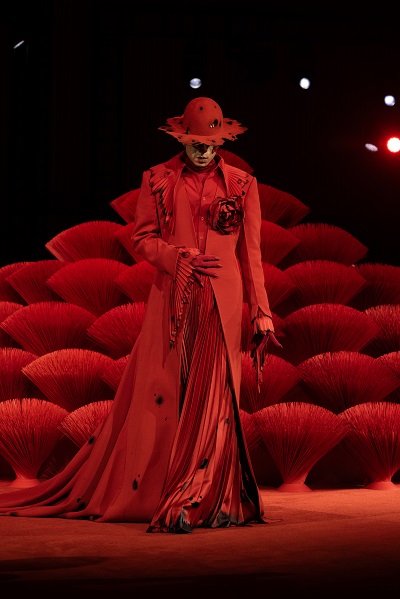
The evolution of couture
Wun's transition from ready-to-wear to couture was a significant milestone. He credits Chanel CEO Bruno Pavlovsky for mentoring him and guiding him towards this path. The move was both strategic and personal, as Wun saw couture as a way to tell more compelling stories and differentiate himself in the saturated ready-to-wear market.
Wun's vision of couture extends beyond the traditional definition of high-end custom-made garments. He believes that emerging designers are redefining couture by incorporating new technologies and focusing on storytelling. While embracing innovation, Wun emphasizes the importance of preserving traditional craftsmanship and balancing techniques.
Challenges and opportunities in the modern fashion landscape
Wun acknowledges the challenges faced by young designers today, including the saturation of the market, the changing dynamics of the industry, and the increasing reliance on social media. However, he also sees the opportunities that social media and technology can provide, such as reaching a wider audience and experimenting with new creative approaches.
Ultimately, Wun's message to aspiring designers is clear: success requires hard work, perseverance, and a passion for the craft. His own journey serves as an inspiration, demonstrating the power of creativity, determination, and a willingness to embrace both challenges and opportunities.
Reliance has partnered with Israeli apparel firm Delta Galil to form a 50:50 joint venture aimed at designing, manufacturing, and selling lingerie products in India. This move puts Reliance in direct competition with Page Industries, the leader in the Indian innerwear market with brands like Jockey and Speedo.
Delta Galil, a global licensee for brands like Calvin Klein, Tommy Hilfiger, and Columbia, has also partnered with Adidas and Polo Ralph Lauren. Through this joint venture, Reliance will manufacture lingerie for its own brands and introduce Delta Galil’s portfolio, including 7 For All Mankind and Necessities, to the Indian market.
Reliance has been expanding its presence in the lingerie segment, acquiring brands like Clovia, Zivame, and Amante, which collectively achieved sales of over Rs2,000 crore in FY24.
India's innerwear market, worth Rs61,091 crore in 2023, is expected to grow to Rs75,466 crore by 2025, with women’s innerwear leading the sector at 60 per cent of the total market. Reliance is well-positioned with its range of mass and premium brands, including Clovia, Zivame, and international labels Marks & Spencer and Hunkemoller.
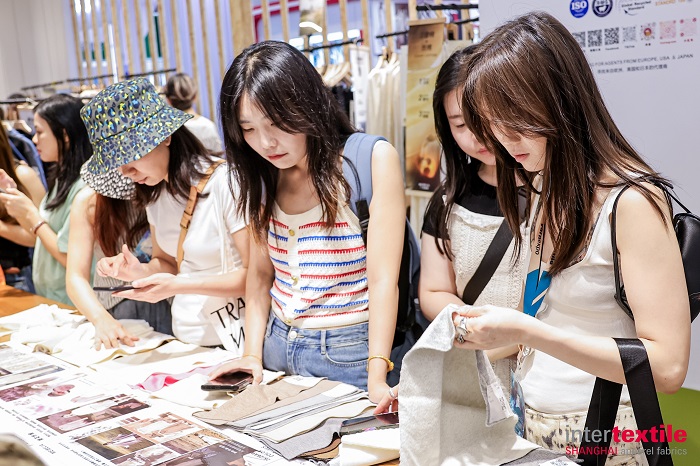
Intertextile Shanghai 2024, held from August 27-29, transformed into a vibrant hub for the global textile industry, with 'Fashionable Fabrics' taking center stage as the show's highlight. The event was a confluence of innovation, trends, and knowledge-sharing, showcasing the dynamic fabric landscape and its evolving role in the fashion world.
Trend Tours: Immersive fabric exploration
The Trend Tours offered an immersive journey through the world of fabrics, guiding visitors through the latest developments and inspirations. From sustainable fibres to innovative textures, the tours unveiled the diverse tapestry of fabrics shaping the fashion industry.“The Trend Tours were a fantastic way to experience the show's highlights and discover new fabric trends. The curated selection provided a valuable overview of the market and sparked creative ideas for our upcoming collections.”Observed Maria Rodriguez, Designer, Zara
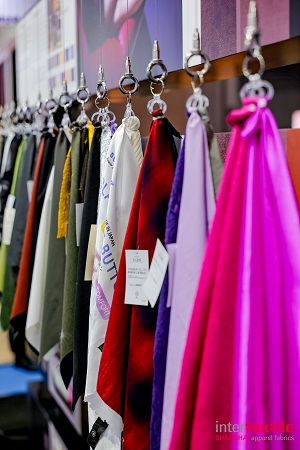
Fabric China Trends Forums: Insights into market dynamics
The Fabric China Trends Forums provided a platform for industry experts to share their insights into the latest market trends and forecasts. The discussions delved into consumer preferences, technological advancements, and sustainable practices, offering a comprehensive understanding of the evolving fabric landscape.
A panel discussion on 'Sustainable Fabrics: The Future of Fashion' highlighted the growing demand for eco-friendly materials. Speakers presented case studies showcasing successful sustainable initiatives, inspiring attendees to embrace responsible practices in their fabric choices.
"Sustainability is not just a trend; it's an imperative for the textile industry. Innovative, eco-friendly fabrics are the future of fashion." Said a renowned designer, Fabric China Trends Forums.
'Fabric to Fashion' by THEi: Bridging the Gap
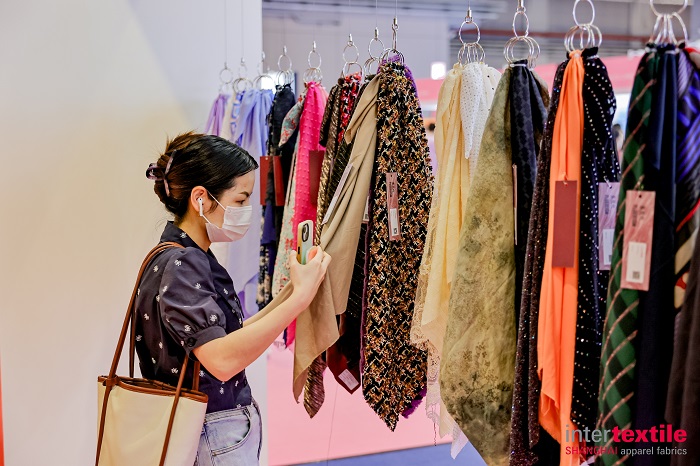
The 'Fabric to Fashion' showcase, presented by THEi (Technological and Higher Education Institute of Hong Kong), offered a unique perspective on the fabric-to-fashion journey. Through interactive displays and presentations, the showcase demonstrated how fabrics are transformed into stunning garments, emphasizing the crucial role of fabric selection in fashion design.“'Fabric to Fashion' was an eye-opening experience. Witnessing the creative process from fabric to finished garment was truly inspiring. It reinforced the importance of fabric choice in bringing fashion designs to life.”Says overwhelmed Emily Chen, Fashion Student, Parsons School of Design
Trends Seminar: Navigating the fabric landscape
The Trends Seminar provided a comprehensive overview of the latest fabric trends, guiding attendees through the vast fabric landscape. Experts shared their insights into colour palettes, textures, patterns, and technological innovations, empowering attendees to make informed fabric choices for their fashion creations.“The Trends Seminar was a treasure trove of information. The expert presentations offered valuable insights into the latest fabric developments, helping us navigate the ever-changing fashion landscape.”Says David Kim, Fabric Sourcing Manager, H&M
Fashionable Fabrics: A resounding success
Intertextile Shanghai 2024 was a resounding success, solidifying its position as a leading platform for the global textile industry. The 'Fashionable Fabrics' showcase, coupled with engaging activities and insightful knowledge-sharing, created an enriching experience for attendees. The event fostered collaboration, innovation, and a deeper appreciation for the artistry and impact of fabrics in the world of fashion.
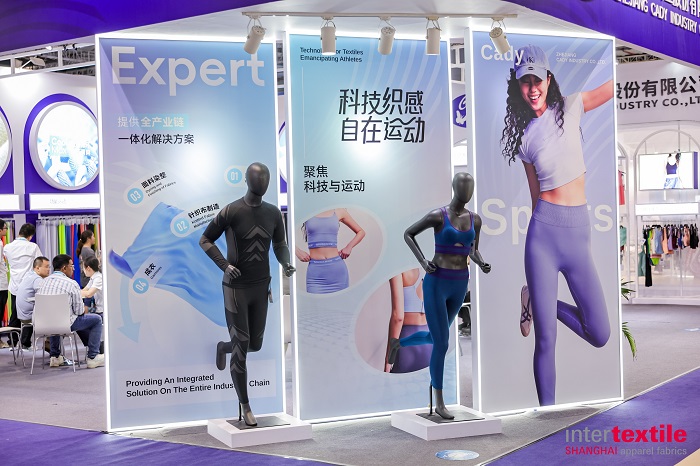
Intertextile Shanghai 2024, held from August 27-29, underscored the rising prominence of functional fashion, where style seamlessly merges with purpose. Showcasing cutting-edge technologies and sustainable solutions, the event highlighted how clothing can elevate our everyday lives, offering comfort, performance, and environmental consciousness.
Functional Lab: Unveiling the future of fashion
The Functional Lab stood as a testament to the show's dedication to innovation. Here, visitors explored interactive exhibits and demonstrations, showcasing how advanced materials and technologies are transforming the possibilities of clothing:
• Smart Textiles: Clothing embedded with sensors and electronics showcased capabilities ranging from monitoring vital signs to regulating body temperature.
• Performance Fabrics: Moisture-wicking, breathable textiles empowered athletes and fitness enthusiasts, enabling peak performance while remaining stylish.
• Protective Gear: Durable, impact-resistant fabrics demonstrated potential applications in workwear, sports, and even everyday life.
"Functional fashion is no longer just for athletes or outdoor enthusiasts. It's about enhancing everyday experiences, providing comfort, confidence, and sustainability."SaysSarah Chen, Functional Lab Curator.
Adds an exhibitor, a leading textile manufacturer, stated, "We're seeing a growing demand for fabrics that not only look good but also perform well. People want clothes that can keep up with their active lifestyles and support their well-being."
Functional Display @ The Cube: Immersive showcase
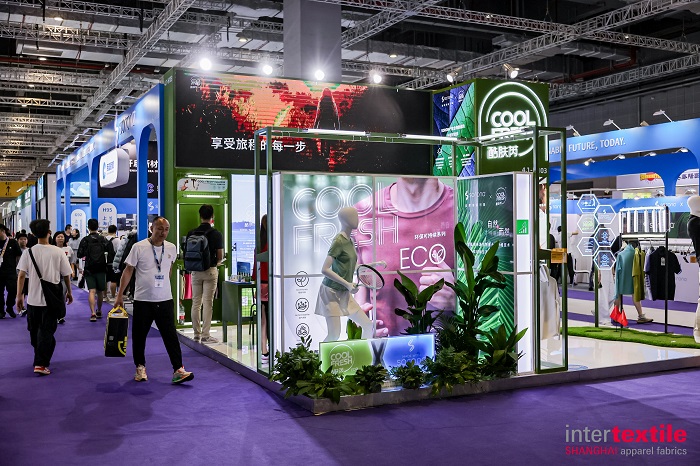
The Cube served as an immersive environment where functional fashion concepts came alive. Dynamic displays showcased innovative garments and accessories, highlighting their versatility and impact on modern living:
Adaptive Activewear: A sportswear collection demonstrated how garments could adjust to changing body temperature and activity levels, offering optimal comfort and performance.
Sustainable Workwear: A line of workwear crafted from recycled and bio-based materials showcased durability and style, proving that environmental consciousness doesn't have to compromise functionality.
"The Cube truly embodied the convergence of style and purpose. It's a testament to how functional fashion can seamlessly integrate into our lives, enhancing our experiences without sacrificing aesthetics." Quoted David Wang, a The Cube visitor. On the same lines, shared a renowned fashion designer, "The Cube has been a revelation. It's inspiring to see how functional fabrics can be used to create such beautiful and practical clothing. It's a testament to the versatility and potential of these materials."
Fringe Highlights: Pioneering a sustainable future
The fringe events at Intertextile Shanghai 2024 emphasized the growing commitment to sustainability in the functional fashion industry:
"Make Fashion More Sustainable with Bio-Derived LYCRA": This session explored how bio-based materials can reduce environmental impact while retaining the performance benefits of synthetic fibers."Sustainability is no longer an option; it's a necessity," said one expert. "We need to find ways to create high-performing fabrics without compromising the planet."
"Building Global Synthetic Technology & Innovation in a Sustainable Way": Industry leaders discussed strategies for developing and adopting sustainable practices throughout the synthetic textile supply chain."Innovation is key to creating a more sustainable future for fashion,"noted a panellist. "We're constantly pushing the boundaries to develop new materials and processes that reduce our environmental impact."
"From Chemical Laboratory to Consumer: The Multiple Imaginations of a Bio-Based Fibre": This presentation traced the journey of a bio-based fiber from its conception to its incorporation into consumer products, showcasing the potential for sustainable innovation."It's fascinating to see the entire process," remarked one of the attendees. "It highlights the complexity and ingenuity behind sustainable fashion."
"Sustainability is at the heart of the functional fashion movement. It's about creating products that not only perform but also contribute to a healthier planet." - Maria Rodriguez, Sustainability Consultant
A vision for Functional Fashion's future
Intertextile Shanghai 2024 offered a glimpse into the future of functional fashion, where innovation, sustainability, and style converge. Through its diverse range of activities, the event showcased the transformative power of clothing to enhance our lives and protect our planet. Functional fashion is more than a trend; it's a testament to the ever-evolving relationship between fashion and technology. It's about clothing that empowers, adapts, and supports us in every aspect of life. The future of fashion is functional, sustainable, and inspiring.

